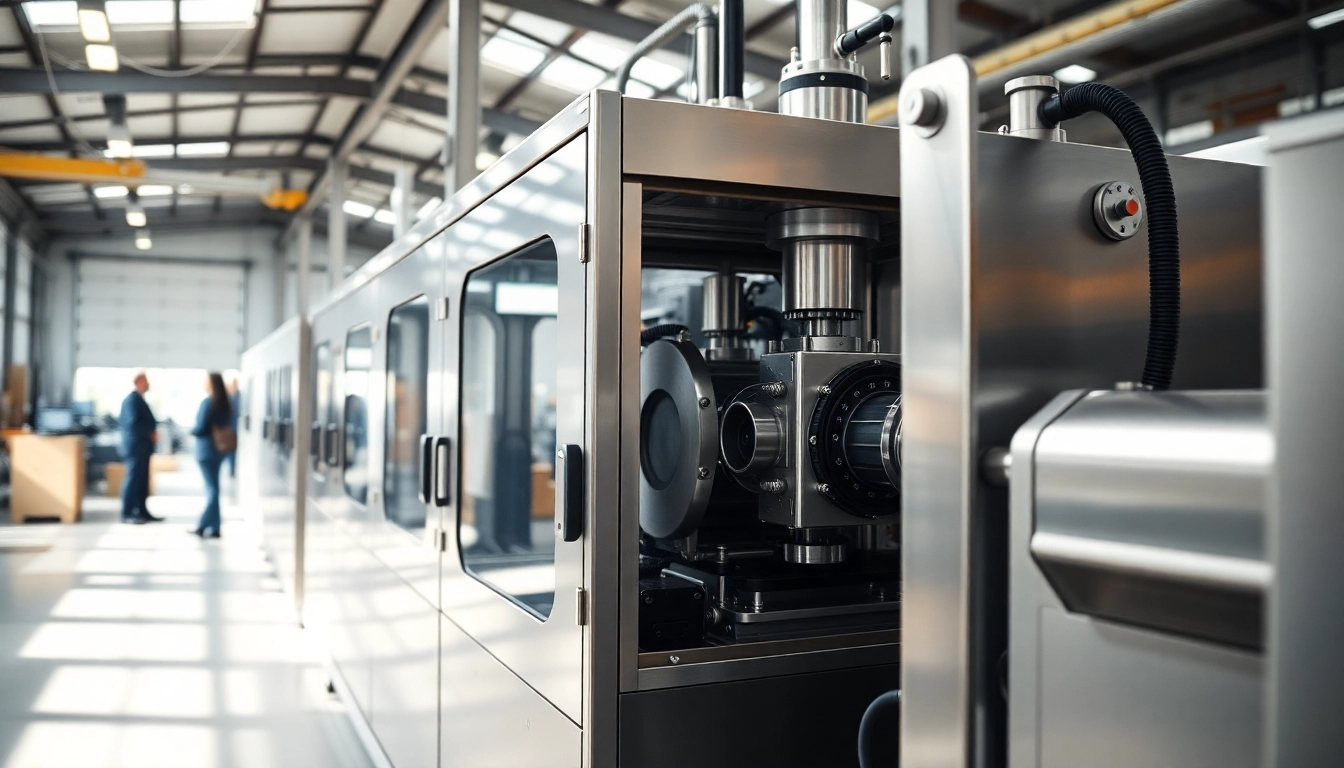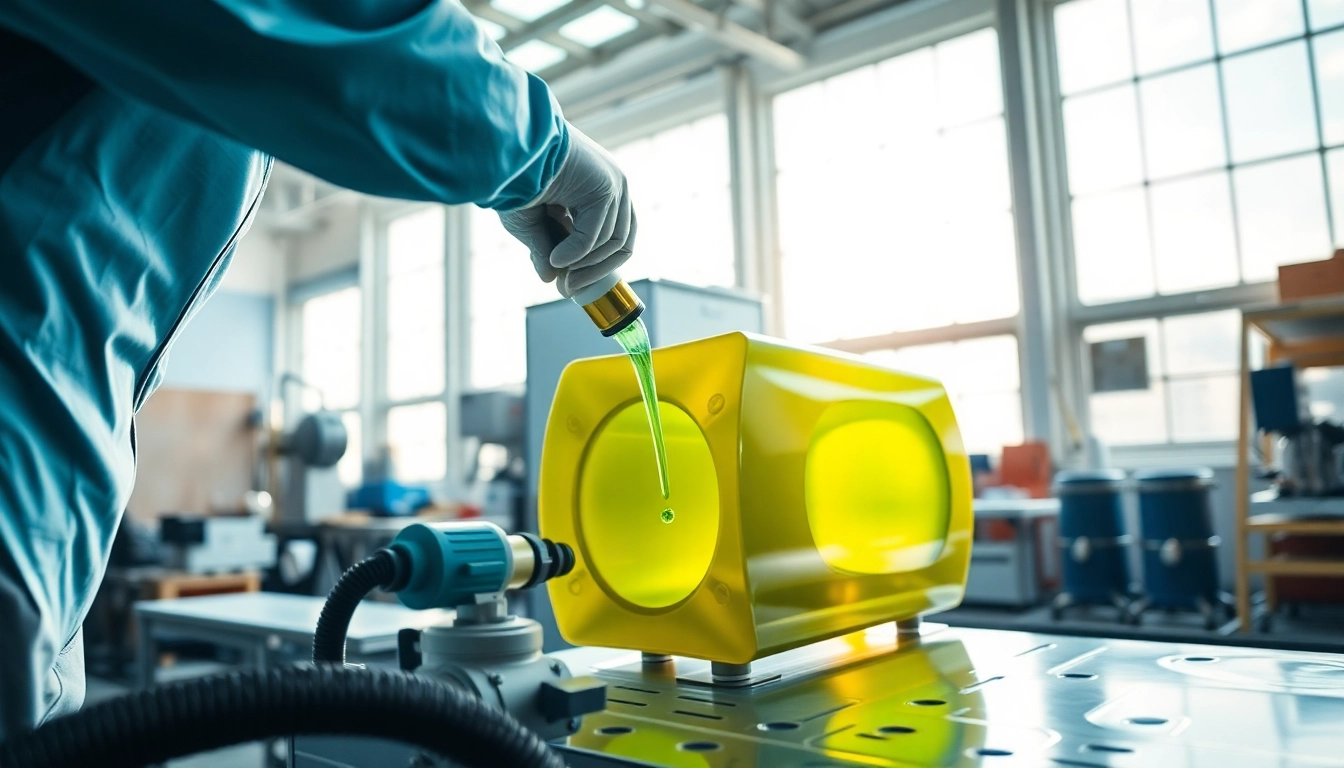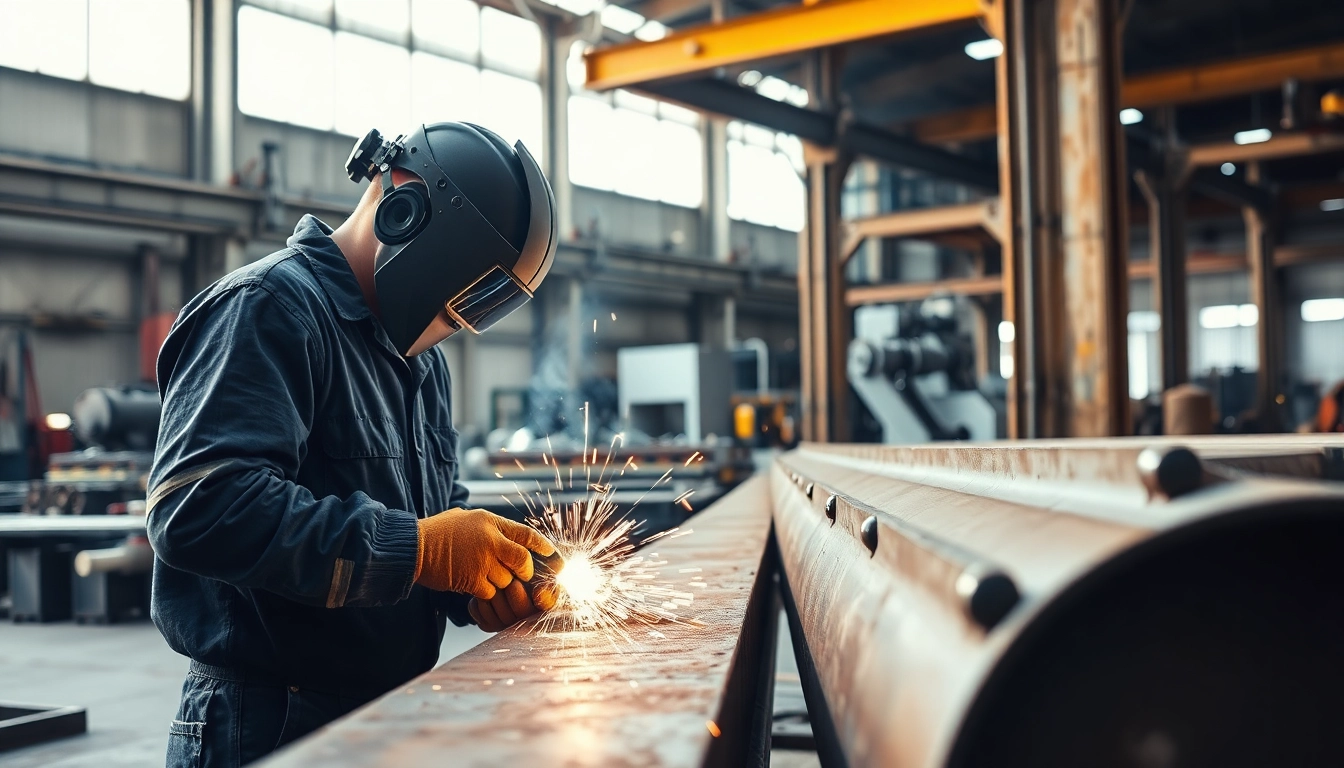Introduction to Blow Molding Machines
Blow molding machines have revolutionized the production of plastic products, making them crucial for various industries from packaging to automotive manufacturing. These machines utilize a sophisticated process to create hollow plastic parts, including bottles and containers, through the application of heat and pressure. In this article, we will explore the fundamentals of blow molding, delve into the types of machines available, and examine their applications across different sectors. For those looking to invest in this technology, understanding the capabilities of a Blow Molding Machine is essential.
What is Blow Molding?
Blow molding is a manufacturing process that involves inflating a molten polymer into a mold to form hollow parts. It is a highly versatile technique that allows for the production of complex shapes with uniform wall thickness. The process is widely used in the production of containers, automotive components, and various consumer goods.
Key Types of Blow Molding Machines
There are three primary types of blow molding processes: extrusion blow molding (EBM), injection blow molding (IBM), and injection stretch blow molding (ISBM). Each type serves different purposes and is suited for specific applications:
- Extrusion Blow Molding (EBM): This method involves extruding a continuous tube of molten plastic (parison) which is then closed in a mold where air is blown into it to form the desired shape.
- Injection Blow Molding (IBM): In this process, plastic is injected into a preform mold and then transferred to a blow mold where air expands it into the final shape.
- Injection Stretch Blow Molding (ISBM): This technique combines injection molding with blowing, allowing for higher clarity and strength in bottles, particularly PET in beverage packaging.
Applications in Industry
Blow molding machines are widely used across multiple industries:
- Packaging: The food and beverage industry heavily relies on blow-molded bottles and containers for packaging.
- Automotive: Parts such as fuel tanks and air ducts are manufactured using blow molding due to their lightweight and durable nature.
- Consumer Goods: Toys, household items, and medical devices often utilize blow-molded components for their ergonomic designs and functionality.
Understanding the Blow Molding Process
Step-by-Step Overview of Blow Molding
The blow molding process involves several key steps:
- Melting the Material: The plastic resin is heated to its melting point.
- Forming the Parison: The molten polymer is formed into a parison, which is key to the next step.
- Blowing: The parison is clamped into a mold, and air is blown into it, expanding it to fill the mold.
- Cooling and Ejection: The part is cooled and then ejected from the mold.
- Trimming and Finishing: The final product may undergo trimming or additional finishing processes.
Materials Used in Blow Molding
A variety of materials can be used in blow molding, including:
- Polyethylene (PE): Widely used for its toughness and flexibility.
- Polypropylene (PP): Known for its chemical resistance and usability in containers.
- Polyethylene Terephthalate (PET): Predominantly used in beverage bottles due to its clarity and safety.
Challenges and Solutions
Despite its benefits, the blow molding process does face some challenges:
- Quality Control: Ensuring consistent product quality can be difficult. Solutions involve rigorous testing of molds and temperatures.
- Material Waste: Inefficiencies in the process can lead to excess waste. Implementing recycling processes can mitigate this issue.
Technological Advancements in Blow Molding Machines
Electric vs Hydraulic Blow Molding Machines
Modern blow molding machines are increasingly transitioning from hydraulic to electric systems.
- Electric Machines: Offer precision, lower energy consumption, and reduced maintenance.
- Hydraulic Machines: While they are powerful and effective for larger applications, they consume more energy and require more maintenance.
Automation and Smart Features
Automation in blow molding enhances production efficiency by reducing human error and increasing output. Features include:
- Automated Quality Control: Sensors monitor product quality in real-time.
- Robotic Handling: Robots are used for product handling, reducing labor costs and increasing speed.
Energy Efficiency and Sustainability
As industries strive for sustainability, blow molding machinery has evolved to minimize energy consumption and material waste. Energy-efficient machines can result in significant cost reductions and lower the environmental impact of production processes.
Choosing the Right Blow Molding Machine
Factors to Consider
When selecting a blow molding machine, consider:
- Production Volume: Match the machine’s capability with your expected output to maximize efficiency.
- Material Compatibility: Ensure the machine can accommodate the types of plastic materials you will be using.
Cost Analysis and Budgeting
Investing in a blow molding machine involves initial costs as well as ongoing operational expenses. Evaluating factors such as production speed, maintenance, and the cost of materials can help you make informed financial decisions.
Vendor Selection and Support
Selecting a reliable vendor is crucial. Look for manufacturers who offer comprehensive support, including installation, training, and maintenance services. A vendor with a good reputation can provide valuable insights and long-term partnerships.
Future Trends in Blow Molding Technology
Innovations on the Horizon
The blow molding industry is witnessing continuous innovation, focusing on integrating AI and IoT for enhanced monitoring and efficiency. As technology advances, machines will become smarter, leading to improved production capabilities and product quality.
Market Outlook and Predictions
The demand for blow molded products is set to rise, particularly in the packaging sector. As consumer preferences evolve towards sustainable packaging, companies that adopt innovative blow molding technologies will have a competitive edge in the market.
Preparing for Industry Changes
Staying adaptable and informed about industry trends is essential. Companies should continuously evaluate their equipment and processes, ensuring they remain competitive in an ever-changing market landscape.


